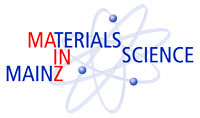


Physikalisches Kolloquium
June 12, 2012 at
5 p.m. c.t.
in
Hörsaal des Instituts für Kernphysik, Becherweg 45
Prof. Dr. Friederike Schmid
Institut für Physik
friederike.schmid@uni-mainz.de
Prof. Dr. Hartmut Wittig
Institut für Kernphysik
hartmut.wittig@uni-mainz.de
The small-scale structure of dark matter halos
Prof. Dr. Simon D. M. White (Director at the Max-Planck-Institute for Astrophysics, Garching)
A wide range of astronomical observations indicate that cosmic structure formation is driven by the gravitational effects of dark matter. This contributes about 80 percent of the total cosmic mass budget and interacts extremely weakly with light and with all known forms of matter. It is most plausibly a new kind of elementary particle, yet to be detected directly or indirectly on Earth. At the time of recombination, 400,000 years after the Big Bang, the Universe was almost uniform, with weak non-uniformities whose statistical properties can be inferred directly from observations of the cosmic microwave background. At this time dark matter particles had small thermal velocities and their distribution deviated from uniformity only through a gaussian field of small density fluctuations with associated motions. Later evolution was driven purely by gravity and so obeyed the collisionless Boltzmann equation. This has immediate consequences for the present distribution of dark matter, even in extremely nonlinear regions such as the part of the Galaxy where the Sun resides. I will show how this structure can be followed in full generality by integrating the Geodesic Deviation Equation in tandem with the equations of motion in high-resolution N-body simulations, enhancing their effective resolution by more than 10 orders of magnitude, and permitting a detailed treatment of annihilation radiation from caustics within dark matter halos. I will also discuss how the predicted distribution at the Sun's position impacts the expectations for laboratory experiments seeking to detect the dark matter directly, in particular, the possibility of extremely narrow line signals that may be visible in axion detectors.